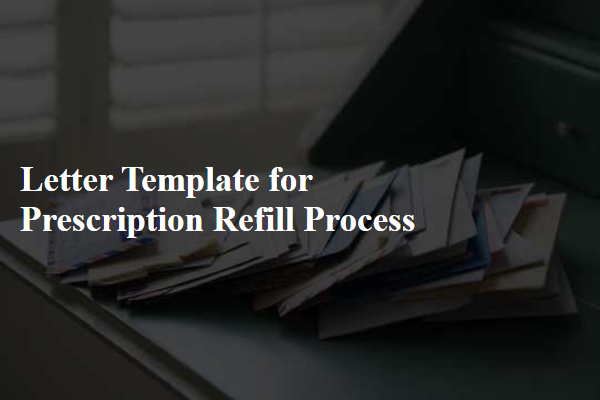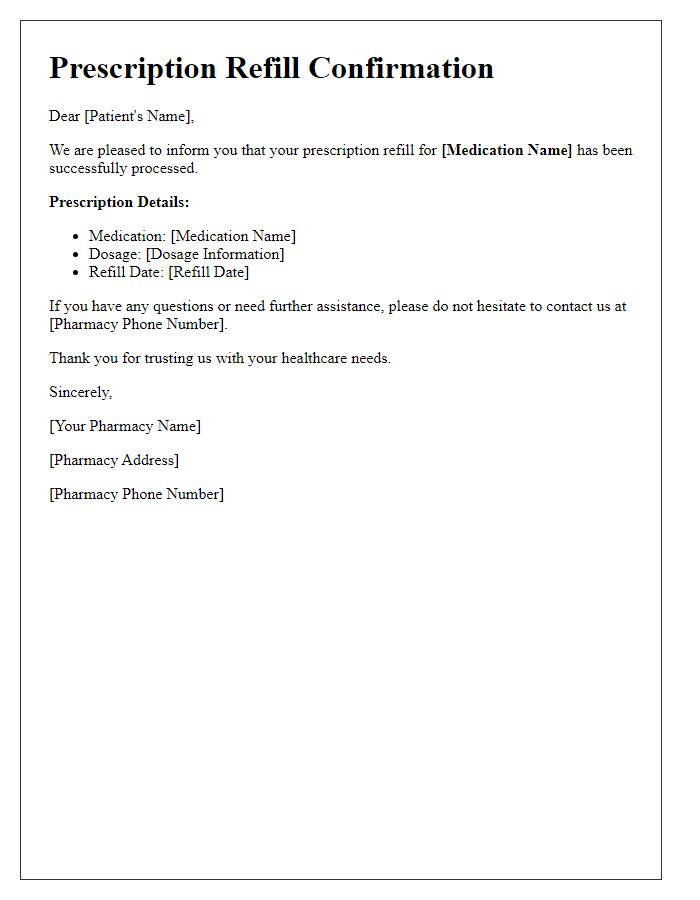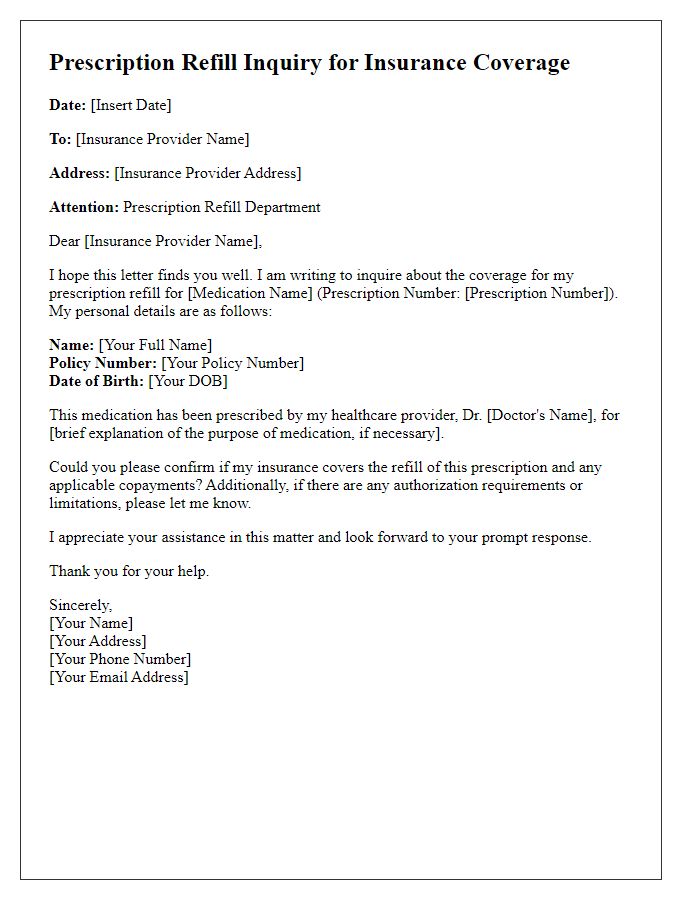Are you struggling with the prescription refill process? Many patients find themselves confused or overwhelmed when it comes to getting their medications renewed. It's important to understand the steps involved and how to efficiently communicate with your healthcare provider or pharmacy. Keep reading to discover a simple template and valuable tips that will make your prescription refill experience smoother and hassle-free!

Patient Information
Patient information is crucial in the prescription refill process as it ensures accuracy and safety in medication management. Essential details include the patient's full name, date of birth, and contact information (phone number and email), which facilitates efficient communication with healthcare providers. The patient's insurance details, including policy number and provider name, are necessary for billing purposes. Medication specifics, such as the prescription number and name of the medication, assist in identifying the medication being refilled. Additionally, documenting any allergies or existing medical conditions provides healthcare professionals with necessary context to prevent adverse drug interactions and promote patient safety. Accurate patient information reduces the likelihood of errors and contributes to successful treatment outcomes.
Prescription Details
Pharmaceutical prescriptions contain essential information such as medication name, dosage instructions, prescribing physician's details, patient information, and refill authorization. Opioid medications require careful monitoring due to their controlled substance classification, necessitating precise documentation of the prescription number and expiration date. Refill requests often involve confirming insurance coverage to ensure that medications remain accessible within financial constraints. State regulations may dictate the number of allowed refills for specific medications, impacting patient access. Furthermore, pharmacies, such as Walgreens and CVS, typically have automated refill reminder systems, enabling patients to stay on track with their medication adherence.
Refill Request Statement
The prescription refill process is crucial for patients requiring ongoing medication management, such as those with chronic conditions like hypertension. A refill request typically involves contacting a pharmacy, often through phone or secure online systems, to authorize additional medication, ensuring adherence to treatment plans. Key details in the request include the patient's personal information, medication name, dosage, and the number of refills remaining. Pharmacies, like Walgreens or CVS, typically require this information to verify the prescription against their system, ensuring compliance with legal and safety regulations. Upon approval, patients receive notifications regarding the pickup or delivery of their prescriptions, ultimately supporting their health maintenance efforts efficiently.
Contact Information
Contacting a pharmacy for prescription refill processes involves several critical details. The pharmacy name (e.g., Walgreens, CVS), located at specific addresses in various neighborhoods, plays a significant role in ensuring correct medication access. Pharmacist contact numbers (often starting with a specific area code, such as 415 for San Francisco) ensure swift communication. Details may include a patient's full name, date of birth, and prescription number, which typically consists of alphanumeric characters. Additionally, insurance information can identify the patient's health coverage provider, affecting the cost of medications. Notably, refills should consider medication expiration dates, often listed on the prescription label and crucial for patient safety.
Thank You Note
The prescription refill process is a critical healthcare service, allowing patients to obtain necessary medications without interruption. Patients should be aware of their pharmacy's policies, such as the time frame for processing refill requests, typically ranging from 1 to 3 business days. Ensure all medication names, dosages, and instructions are clearly communicated to the pharmacy staff to avoid any misunderstandings. Additionally, patients may need to provide updated insurance information if any changes have occurred, potentially impacting the cost. This process often includes a confirmation notification, which can be received via text message or email, ensuring patients remain informed about their refill status. Overall, an efficient prescription refill process helps maintain health continuity, fostering patient satisfaction and adherence to treatment plans.
Letter Template For Prescription Refill Process Samples
Letter template of prescription refill authorization for healthcare provider.

Letter template of prescription refill documentation for medical records.

Letter template of prescription refill confirmation for patient notification.

Letter template of prescription refill status check for ongoing treatments.










Comments